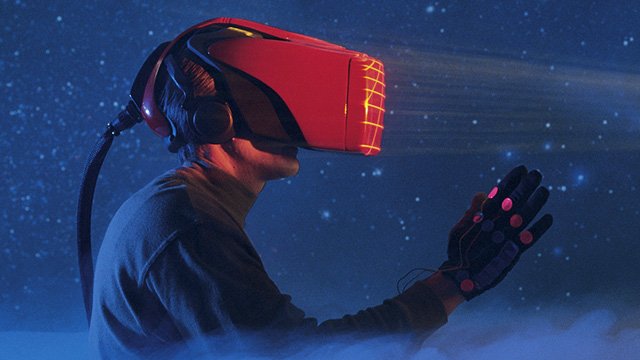
It can be easy to forget, now that high quality VR offerings are available, how abysmally shitty this technology used to be and how absurdly hyped everybody was for it anyway.
I was among them. The whole VR craze happened during a formative stage of my youth, such that it became cemented in my mind as one of those technologies that defined The Future® . You know, like hoverboards, flying cars, robot butlers...the stuff we'd have when The Future® arrives.
I read young adult novels centered around virtual reality. I watched VR Troopers. I unironically enjoyed Hackers. If there'd been a VR themed cereal I would've bought it. I even blew my allowance to play those terrible Virtuality arcade games at the mall.
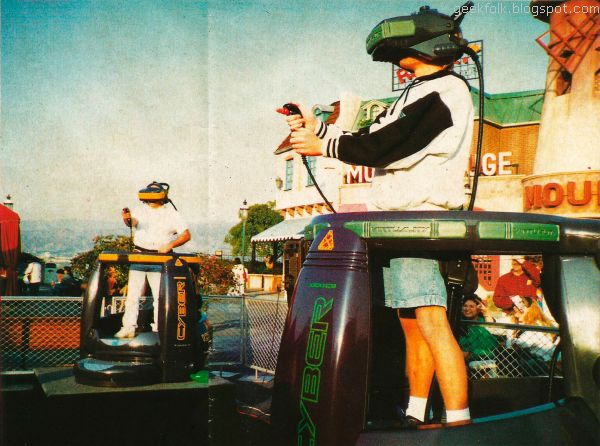
You know the ones. Huge clunky headgear, powered by a cluster of Amiga 4000s pushing 276x372 pixels per eye at ~15fps, with a field of view around 60 degrees. For comparison, the Oculus Rift CV1 is 2160 x 1200 at 90fps with a 110 degree field of view. And there are people today who say it's not enough! Oh, those sweet summer children who don't know what us old timers endured to get our VR fix back in the day. Just look at what the fucking games looked like, too:
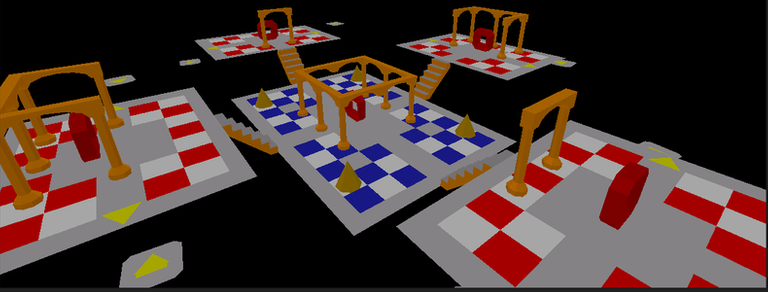
Of course at 60 grand per machine none of us were going to be getting a Virtuality machine under the tree. Big name game companies like Sega and Atari promised they had VR headsets for the consumer market in the pipeline, for the most part a cruel lie, or in some cases genuine ignorance as to the impossibility of producing such gear affordably at the time.
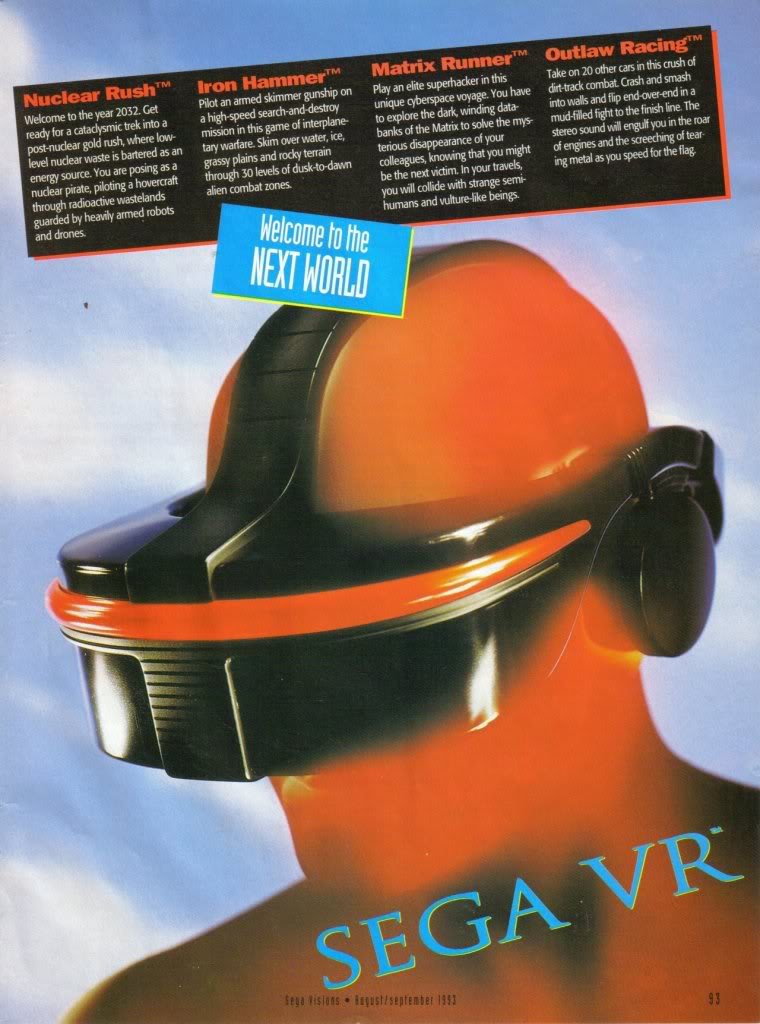
Sega claimed it was so realistic they couldn't release it to the public for fear that people would stumble into things and hurt themselves, believing the games were real. The truth of the matter was that high persistence, washed out low res 1990s LCD technology coupled with the inability of the Genesis hardware to drive anything remotely close to an acceptable VR experience resulted in those who tried it at consumer electronics shows coming away severely disappointed. Sega was wise to pull the plug, probably one of the only sound business decisions they ever made.
The Jaguar VR was essentially just rebranded Virtuality tech. The Jaguar, while more capable than the Amiga based rig used in arcades, still wasn't really up to the task of driving stereoscopic polygonal graphics at a bearable framerate. It did feature optical head tracking, and several games were released with the VR code still in them, such that some dedicated collectors are able to play Jaguar VR games on the actual hardware today.
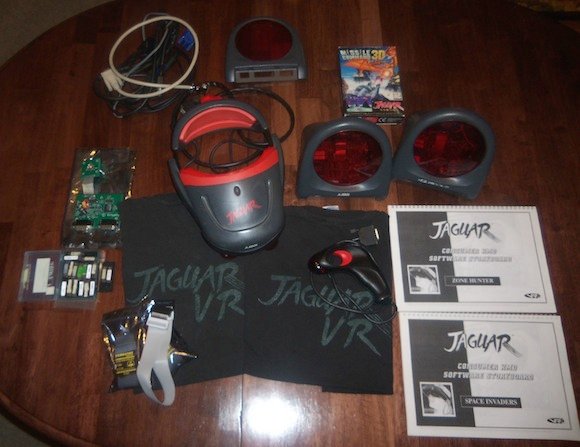
Everybody knows about the Virtual Boy. It's hardly with discussing here as everything that can be said about it already has been, right? Except it's been unfairly negative. The technology used in the Virtual Boy was remarkably clever for 1995.
To avoid the expense of including two full micro LCDs, instead the same LED technology used in those novelty fans or clocks you've seen which create apparent glowing numbers hanging in the air was employed to generate a full display for each eye using a vertical column of red LEDs and rapidly oscillating mirrors.
The mirrors oscillated side to side, timed perfectly with the LEDs turning on and off, so that what reaches your eye is an apparent full grid of LEDs. Why red? Because blue and green LEDs were much more expensive at the time. That didn't last, and if the Virtual Boy came out a few years later it might've been in full color, but hindsight is 20/20.
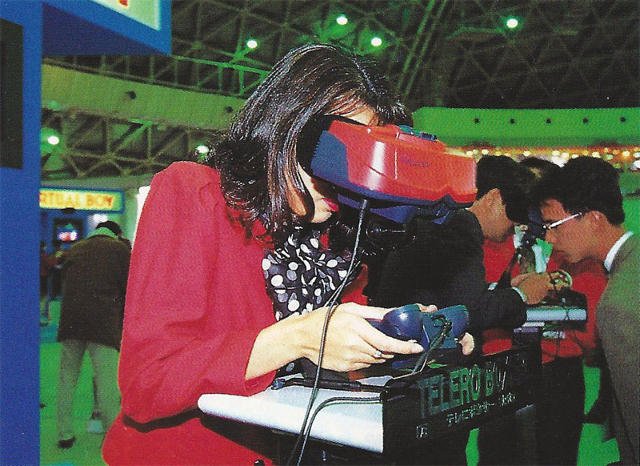
Had the Virtual Boy not been a standalone unit but instead an optional premium 3D display for the N64, it could have offered a lot of value and something close to the experience consumers were looking for at the time. By delaying launch until blue and green LEDs came down in price, it could have been full color, and the N64 would supply the hardware muscle necessary for a really satisfying, quality VR experience at home.
Most N64 game engines were coded around the assumed necessity of displaying 2 to 4 simultaneous views for splitscreen multiplayer. It would not have been that much of a burden on the hardware, then to render a view for each eye while maintaining 30fps provided the game was designed around those parameters.
Full color stereoscopic polygonal 3D visuals on a home machine in 1995 for a little under $500 would have been a phenomenal value, and much closer to what we were all led to believe the Virtual Boy was going to offer before it was revealed to the public:
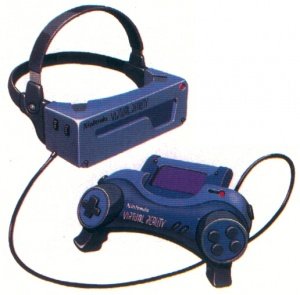
Sadly that would have required a very specific set of decisions and some amount of implausible clairvoyance in order to occur. This brings us to efforts on the PC gaming side of things, absolutely dominated by the reasonably impressive Forte VFX1:
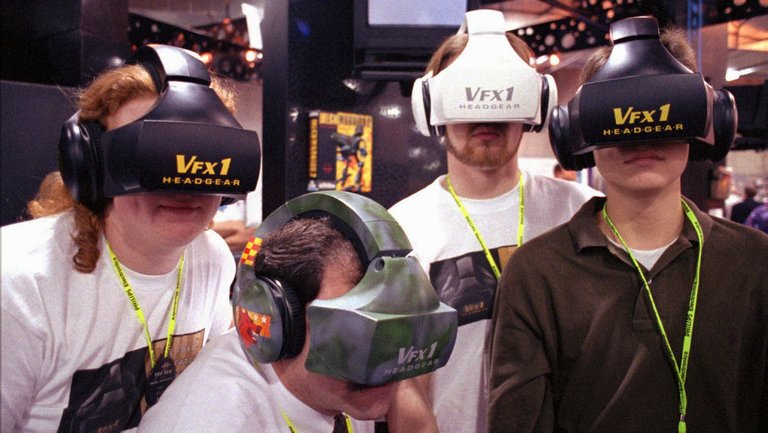
It was actually a pretty well made piece of kit for the day. 263 x 230 resolution per eye brought Virtuality type specs into the home at last (albeit for just under $1,000) and with a 45 degree field of view, while not as immersive as the Virtuality HMDs, it was serviceable.
Notably, it used a magnetic tracking system that sensed the Earth's magnetic field, so the setup software needed you to tell it where on the globe you lived. It required a dedicated ISA graphics card that came with it, and the 486/DX2 machines it was most commonly used with could play stuff like Rise of the Triad, Duke Nukem 3D, Descent and Quake, all of which had VR specific code included as many high profile people in the industry really thought VR was here to stay.
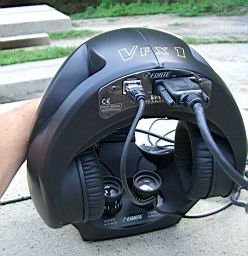
Sadly it wasn't, and although Forte hung on longer than the rest, even making an updated model with 800*600 resolution and 16 bit color, it ultimately folded like the others. The technology simply wasn't there to deliver the experience consumers were expecting.
A big part of it was LCD technology. We had the lenses necessary for high fields of view, but the microdisplay approach was fundamentally flawed, hence why today's HMDs use larger, phone sized display panels. The resolution was awful, the initial round of HMDs only supported 256 colors, and the narrow field of view meant that what you actually saw inside the helmet was like looking at a large monitor from a foot or two away rather than truly being surrounded by the game world:
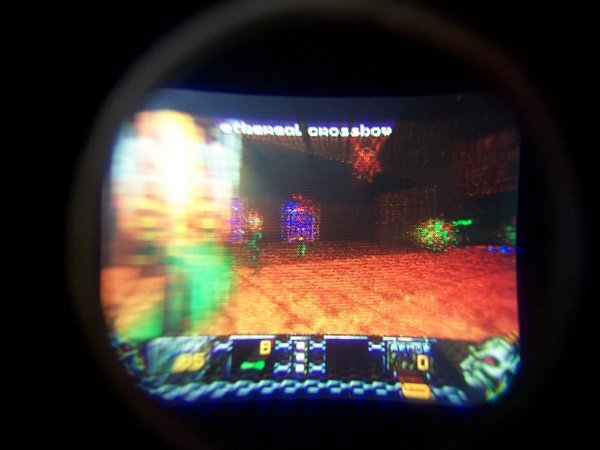
Computing hardware also really wasn't up to snuff. 2.5d engines running at 20fps wouldn't cut it for VR. Even 90fps with async timewarp, ultra modern low latency tracking and so on still makes some people nauseous. VR has returned in 2016 only because the technology is just now barely good enough for it. We were nowhere close back in '92, yet Hollywood led us to believe it would be in our homes by '93. Imagine the disappointment!
For those wondering if it truly is here to stay this time, saying "after all, it failed once before" let me introduce you to the Gartner "hype cycle":
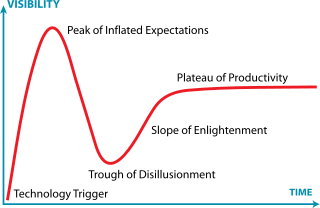
It is a pattern seen in emerging technologies, wherein the moment it becomes possible to put together public demonstrations of it, there is a huge surge of hype. Then as the high cost and long development time necessary to make it good enough and cheap enough for the consumer market dawn on everybody, the hype dies a sudden, violent death.
This is the trough of disillusionment. A childish overreaction, as if to say "We'll NEVER have it! It's IMPOSSIBLE!" and giving up all hope, even mocking the very concept of it. Sour grapes, as a mass consumer behavior. It's how we cope with disappointment.
But just as certainly as death or taxes, technology improves. As it does so, now and then some startup tries to bring the technology to market based on recent advances. They fail. Then a few years later someone tries again, and so on, until an inflection point is reached. The point where all the stars align, the technology is just barely ready and possible to sell at a price point consumers will just barely accept. $800, specifically:
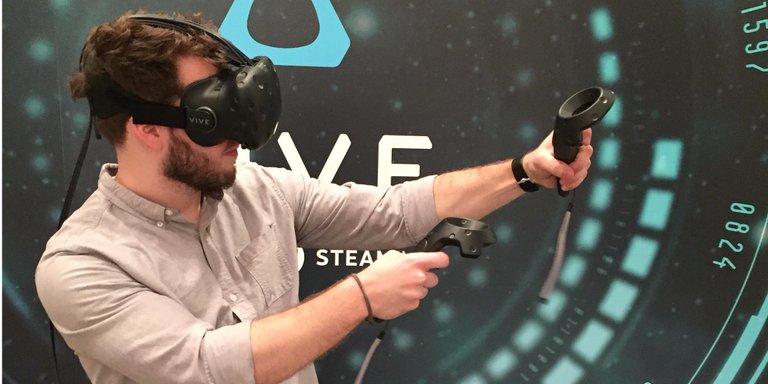
Speaking as someone who has witnessed this entire cycle start to finish, take it from me, that's where we are now. The same thing happened with optical media, laserdisc flopping hard just before DVD dominated. It happened with electric cars, which flopped in the 70s and the 90s before recently finding market acceptance at last. It's even happening with manned spaceflight, as SpaceX brings us out of the trough of disillusionment which followed the Apollo lunar missions.
So don't give up on your dreams of the future. Failures are just roadblocks on the path to success, and The Future® really does arrive eventually, it just takes a lot longer than mass media would have you believe. If something is possible to create according to the laws of physics, and desirable enough to merit the cost of development, it will be created at some point.
It's really difficult to express how fulfilling it has been, between 2012 and 2016, to finally see this childhood dream of mine realized. I really never thought the day would come. It makes me think perhaps we really will get those flying cars soon, those robot butlers, or a Mars colony.
That's all for now. I have to go surf the e-inter cyber highway and jack into the datamatrix digi cybernet. See you on the grid, console jockeys and keyboard cowboys. }█-)
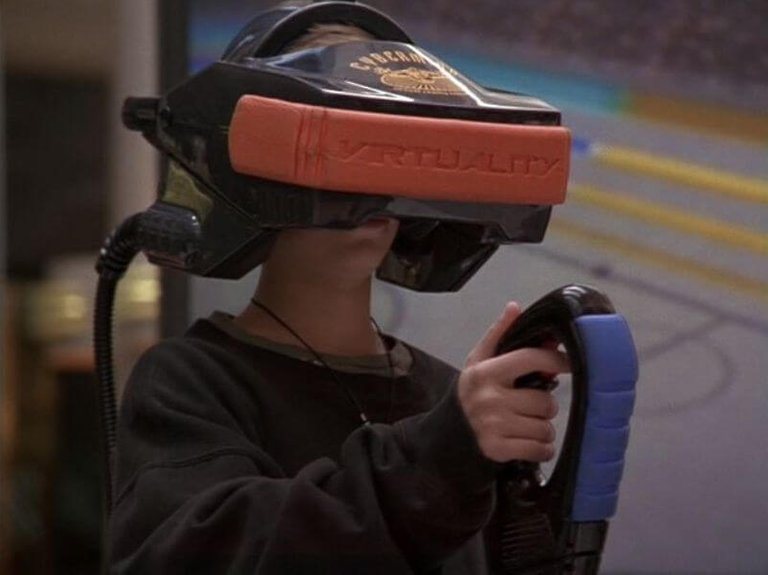
I remember those things in the mall when I was a teen. I tried one once and went back to regular video games.
Tried any of the modern higher tech offerings? They're remarkable tbh, even the plastic viewers that you slot your phone into provided you get a well made one.
You forgot the 3D glasses for the Sega Master System, which for their time (mid 80's) were mind blowing and lead to me being completely underwhelmed a couple years ago when my friend showed me his crazy expensive 3D tv with the basically the same technology in the active glasses.
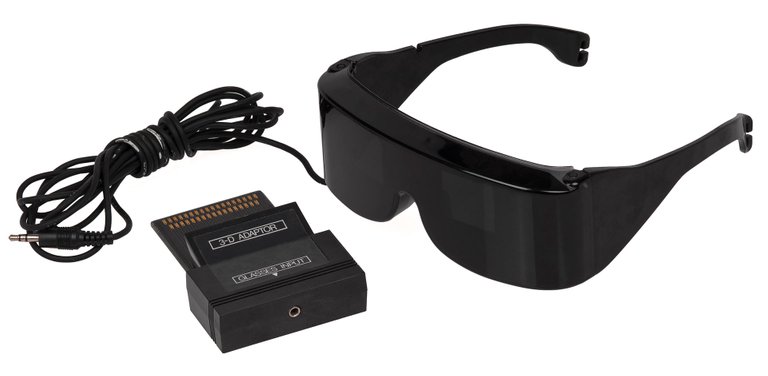
image source: wikipedia because I sold mine on ebay 10 years ago haha
Oops just read the title, guess they fell outside of the scope of this article. Nevertheless they're great.
Great article by the way!
Thanks! It may well prove to be worth several pennies even
I left a lot of stuff out as otherwise it would be novel length, but looking at a conventional CRT television through shutterglasses is not virtual reality. I, too, wasn't very impressed when I played one of the Uncharted games on a friend's PS3 using a 3D television. There's a reason 3DTV didn't take off and VR did. You really need a dedicated display for each eyeball in order to do 3D well.
True enough on the shutterglasses not -really- being virtual reality.
Hi! I am a content-detection robot. I just wanted to let people know that alexbeyman is a verified author!
I am a silly robot!
Ung. !cheetah bad robot
How do I file a restraining order against a robit
Hi! I am a content-detection robot. I just wanted to let people know that alexbeyman is a verified author!
Okay, going to turn this off until I fix this bug... Apologies.